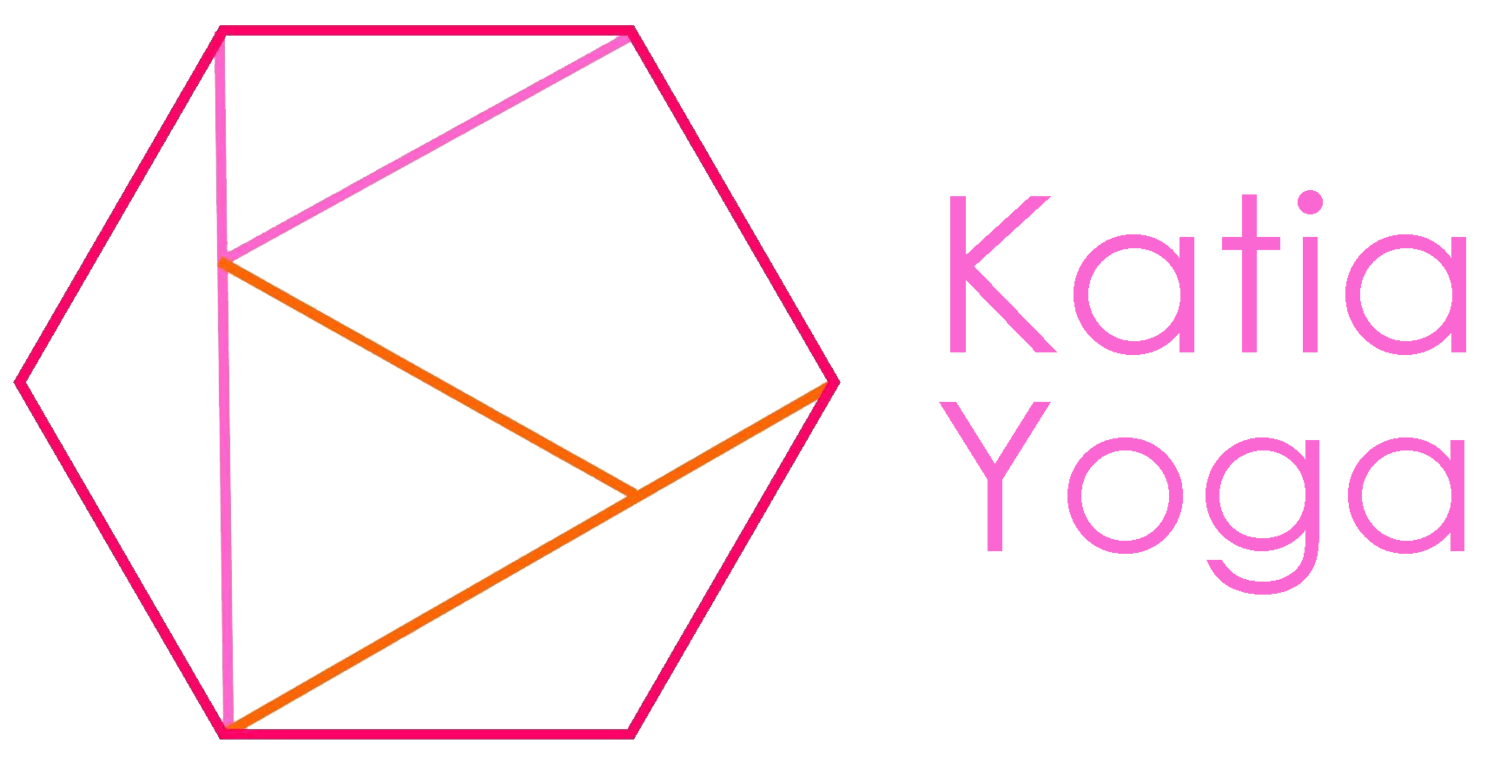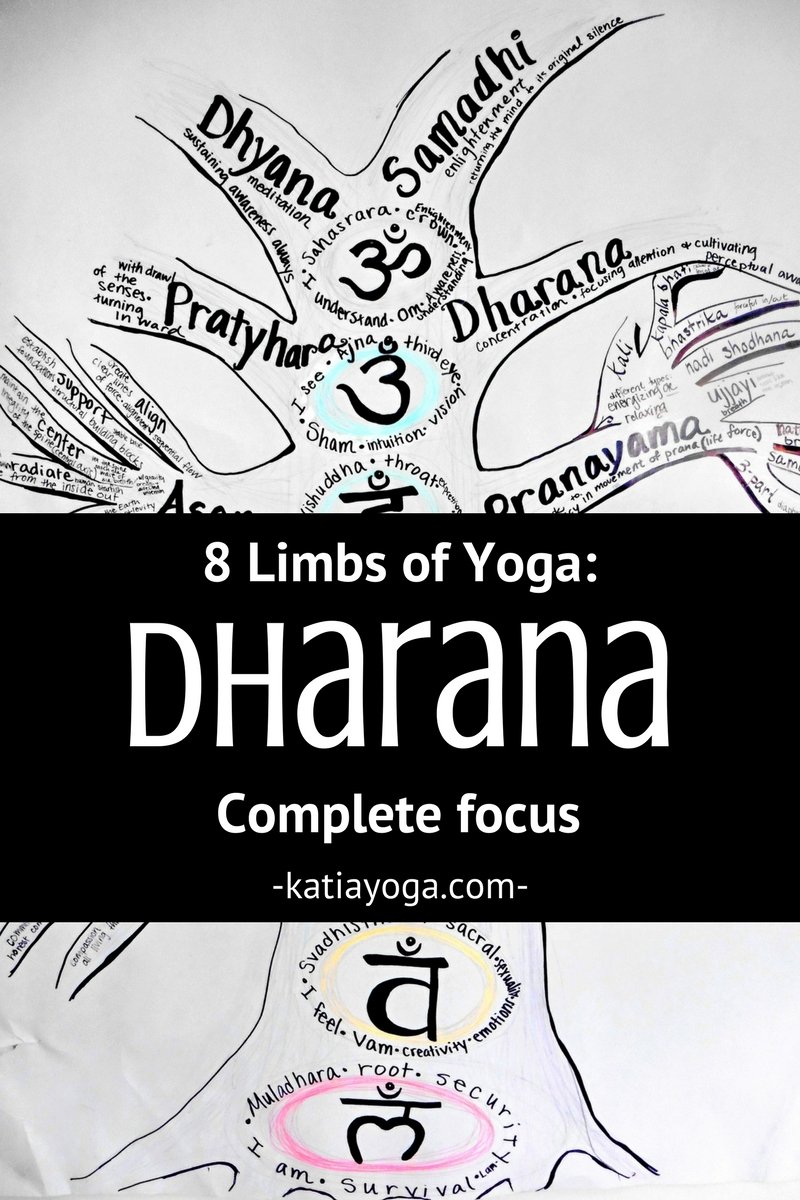8 Limbs of Yoga: Dharana: Total Focus


[Just so you know, this post contains affiliate links, meaning I will get a small commission if you click through and purchase something]
Patanjali's 8 limbs of yoga tell yogis how to behave and live. They include physical and mental/spiritual guidelines. The 6th limb is Dharana, which is translated as focus or total concentration.
Dharana or concentration is closely connected to the 5th limb, Pratyahara or Withdrawl from the senses. To achieve total concentration, you have to disconnect from receiving every little stimulus around you. Try not to let every buzz of the phone, rustle of the breeze, passerby etc. can't steal away your focus (unless of course, you've chosen to devote your focus on those sounds. One tantric practice involves listening to sounds but not identifying them).
The Meaning of Dharana
Dharana is that intense focus that makes you read through your bus stop or when you look up from your yoga practice and realize that an hour has already gone by. Often, these things happen without you realizing them. Dharana is the practice of intentionally sharpening your focus onto one thing. This could be something external like the drishti (or focal) point for your yoga pose, a picture of a beautiful, mesmerizing mandala, or the task of doing the dishes. Your focus could also be on something internal, like a chakra or body part. Whatever your focus is, dharana is quieting the mind, aside from your singular intense focus. Your concentration is so strong that it pushes the other thoughts out of your mind. The rest of your mind becomes still because all of your energy is so intensely devoted to your fixed focal point.+
Putting Dharana to Work
Your mind is a muscle that you can train and shape-- with practice, honing in on that one focus point will become easier. You can start by setting looser parameters. For example, decide to only think about the Adi Mantra-- so you are allowed to recite it, contemplate it, break it down, consider how it applies to everyday life-- whatever you feel! The main point is you're not making a mental grocery list or replaying a moment from earlier in the day, as examples-- stay with the general topic of the mantra. You can gradually par down your focus point until it is very narrow and specific-- from our example-- you're only quietly, subtly reciting the mantra and harnessing its powers. This same idea can be applied to any topic that you choose.
In a way, dharana is similar to mindfulness- both call for that one-track focus and being fully present. Fully give yourself to the moment, whatever you may be doing, whether it's reading, doing chores or something more yogic like yoga asana (the third limb), reciting a mantra, or practicing pranayama (the 4th limb). Give everything you do everything you've got!
In yoga poses, focus on your alignment and engaging all of the appropriate muscles as well as your drishti (visual focus point). Each pose has so many intricacies to consider! Focusing on one or two is a great use of dharana.
Chanting or singing mantra is also a beautiful use of dharana-- image the god or goddess you're singing to or feel the words as deeply as you can-- each one can resonate within you.
Pranayama is another great one! Feel the breath entering and exiting your body. Feel the energy you create with your breath (that prana) coursing through your body-- focus in on the practice and its effects.
Doing chores also can be meaningful if you give each scrub a thoughtful intention or carefully, neatly folding or tidying. Literally anything can become a dharana practice as long as you are fully present and highly aware of what you are doing/thinking/feeling/creating.
Antaratma sadhana: the Innermost Quest
Dharana (the 6th limb of yoga) combined with the 7th limb: meditation/dhyana and the 8th limb: samadhi/enlightenment are called the antaratma sadhana, or the innermost quest. The combination of concentration, meditation and enlightenment is highly powerful and deeply spiritual. Through these three limbs you can look deeply within yourself and your universe.Samyama means binding or tying up- and is often used in reference to these 3 limbs of yoga because they are so intricately linked and their combined practice is so much more meaningful. You're probably noticed I've referenced nearly all 8 limbs of yoga in this post-- they are all connected in a way, like the interconnectedness of all things.
Dharana is the 6th limb of the Patanjali's 8 limbs of yoga. Dharana is total focus, complete concentration, and being deeply present in all that you do. Read on to see how you can use dharana and its relationship with the other limbs of yoga



